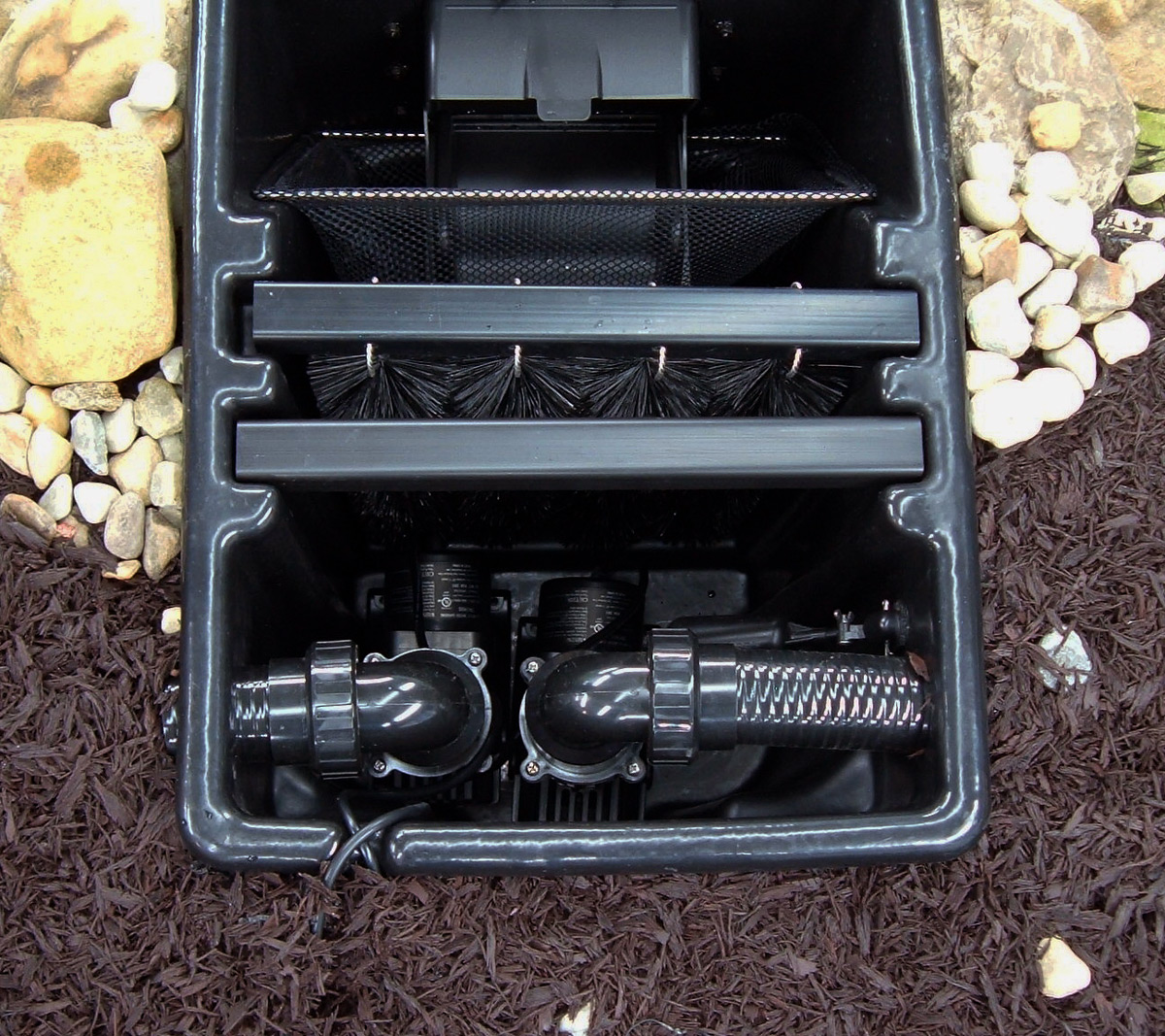300 Level 301 - Chapter 2
Advantages of Redundancy

When are two pumps less costly to run than one? Always! Let’s go back to those Laws of Affinity. If it costs four times the power to double the volume, then, in a perfect world, cutting the volume in half should cut the wattage to 25%. This is the secret to expensive variable speed controllers; slowing the impeller speed electronically drops wattages dramatically. Unfortunately these controllers are very expensive, so the savings on smaller, home-sized water features don’t come close to a return on the investment, but there is another way. What if you were to use two smaller pumps instead of one larger? Two half-size pumps should theoretically use about half the electric of one “double-size” pump. Now, the world is far from perfect, and pumps are never 100% efficient, but you will always realize a savings in electrical cost using two smaller pumps. With tiny features and flows under 1000 GPH, the savings isn’t worth the cost of the second pump, but at flows of 4000 GPH and above, it’s a totally different story. Let’s take a look at a “typical” water feature that requires around 4000 GPH at 5’ of head. The Comprehensive Pump Chart gives us the TW4800 as an ideal choice, operating at its Best Efficiency Point (BEP) and delivering 4000 GPH at 5’ of head for 425 Watts. Two TW2400’s deliver 3900 GPH at 350 Watts, a 20% savings of 75 Watts that would pay for the second pump in about two years. The higher the head, the faster the second pump pays for itself. If we needed 6000 GPH at 17.5’ of head, two A05L cost 1000 Watts to run versus one A31 at 1160 Watts, with a payback in under three years.

When are two pumps less costly to run than one? Always! Let’s go back to those Laws of Affinity. If it costs four times the power to double the volume, then, in a perfect world, cutting the volume in half should cut the wattage to 25%. This is the secret to expensive variable speed controllers; slowing the impeller speed electronically drops wattages dramatically. Unfortunately these controllers are very expensive, so the savings on smaller, home-sized water features don’t come close to a return on the investment, but there is another way. What if you were to use two smaller pumps instead of one larger? Two half-size pumps should theoretically use about half the electric of one “double-size” pump. Now, the world is far from perfect, and pumps are never 100% efficient, but you will always realize a savings in electrical cost using two smaller pumps. With tiny features and flows under 1000 GPH, the savings isn’t worth the cost of the second pump, but at flows of 4000 GPH and above, it’s a totally different story. Let’s take a look at a “typical” water feature that requires around 4000 GPH at 5’ of head. The Comprehensive Pump Chart gives us the TW4800 as an ideal choice, operating at its Best Efficiency Point (BEP) and delivering 4000 GPH at 5’ of head for 425 Watts. Two TW2400’s deliver 3900 GPH at 350 Watts, a 20% savings of 75 Watts that would pay for the second pump in about two years. The higher the head, the faster the second pump pays for itself. If we needed 6000 GPH at 17.5’ of head, two A05L cost 1000 Watts to run versus one A31 at 1160 Watts, with a payback in under three years.




